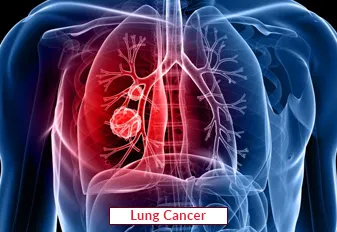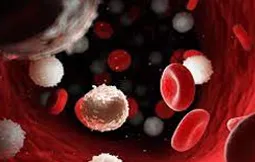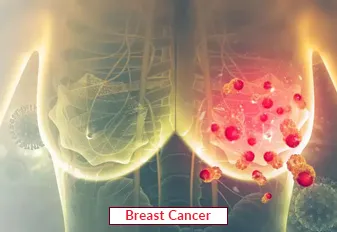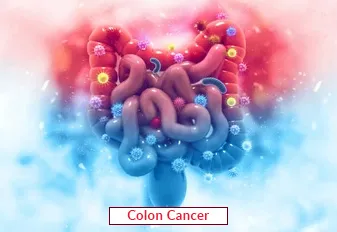Lung Cancer Treatment

Lung cancer is a life-threatening disease that starts in the lungs, typically in the cells lining the air passages. It's the leading cause of cancer-related deaths worldwide. Lung cancer is often linked to smoking, but it can also occur in non-smokers due to environmental factors or genetic predisposition. Common symptoms include persistent cough, chest pain, shortness of breath, and coughing up blood. Early detection through screenings like CT scans can improve lung cancer treatment outcomes. Lung cancer is a serious and life-threatening disease that occurs when abnormal cells grow out of control in the lungs.
Types Of Lung Cancer
Lung cancer is a complex disease with several distinct types, each with its own characteristics and treatment considerations. Understanding these types is crucial for diagnosis and personalized lung cancer treatment. Here are six primary types of lung cancer:
-
Non-Small Cell Lung Cancer (NSCLC):
- NSCLC is the most common form, accounting for approximately 85% of all lung cancer cases. It is further divided into subtypes:
- Adenocarcinoma: Often found in the outer part of the lung and commonly seen in non-smokers.
- Squamous Cell Carcinoma: Typically found in the larger airways and often associated with a history of smoking.
- Large Cell (Undifferentiated) Carcinoma: A less common subtype that can occur in any part of the lung.
- NSCLC is the most common form, accounting for approximately 85% of all lung cancer cases. It is further divided into subtypes:
-
Small Cell Lung Cancer (SCLC):
- SCLC is a fast-growing and aggressive type of lung cancer that tends to spread early to other parts of the body. It is strongly associated with smoking. SCLC accounts for about 10-15% of all lung cancers. It is more common in men than in women, and it is most often diagnosed in people over the age of 50 for Lung cancer treatment.
-
Carcinoid Tumors:
-
Carcinoid tumors are a rare type of cancer that can arise in several places throughout your body. Carcinoid tumors, which are one subset of tumors called neuroendocrine tumors, usually begin in the digestive tract (stomach, appendix, small intestine, colon, rectum) or in the lungs. Carcinoid tumors are slow-growing, but they can spread to other parts of the body, such as the liver, bones, and brain. Carcinoid tumors can also produce hormones, which can cause a variety of symptoms, including flushing, diarrhea, wheezing, and heart problems.
-
-
Pulmonary Sarcomatoid Carcinoma:
- Pulmonary sarcomatoid carcinoma (PSC) is a rare and aggressive type of lung cancer. It accounts for less than 1% of all lung cancers and is more common in men and smokers. PSC is characterized by the presence of both carcinomatous and sarcomatous elements in the tumor.
-
Lung Adenocarcinoma In Situ (AIS):
- AIS is a very early and non-invasive form of lung cancer, often identified by chance on CT scans for Lung cancer treatment.
Lung adenocarcinoma in situ (AIS) is a precancerous condition that affects the cells of the lining of the lung. Adenocarcinoma is the most common type of lung cancer, and AIS is the earliest stage of this cancer.
AIS cells look abnormal under a microscope, but they have not yet spread into the surrounding tissue or to other parts of the body. This means that AIS is not yet cancer, but it can become cancer if it is not treated.
- AIS is a very early and non-invasive form of lung cancer, often identified by chance on CT scans for Lung cancer treatment.
-
Lung Lymphoepithelioma-Like Carcinoma (LELC):
- LELC is a rare subtype often linked to Epstein-Barr virus (EBV) infection. Lung lymphoepithelioma-like carcinoma (LELC) is a rare and aggressive type of lung cancer that is characterized by the presence of both epithelial and lymphoid cells in the tumor. It is more common in young, non-smoking Asians and is often associated with Epstein-Barr virus (EBV) infection.
About Lung Cancer
Lung cancer can potentially spread from other organs. Metastases are the term used when cancer cells spread from one organ to another.
Symptoms Of Lung Cancer
Lung cancer, whether it's non-small cell lung cancer (NSCLC) or small cell lung cancer (SCLC), often presents with a range of symptoms, though they may not become noticeable until the disease has advanced. Recognizing these symptoms is crucial for early detection and timely treatment. Here are six common symptoms of lung cancer:
-
Persistent Cough: A chronic cough is one of the most prevalent symptoms of Lung Cancer treatment. It may produce mucus or blood and often worsens over time. A cough that lingers for several weeks, especially in smokers or those with risk factors, should be evaluated.
-
Shortness of Breath: Lung cancer can obstruct airways or cause fluid accumulation, leading to shortness of breath, even with minimal physical activity. As the tumor grows or spreads, breathing difficulties become more pronounced.
-
Chest Pain: Persistent, localized chest pain can be a sign of lung cancer. It may worsen with coughing, laughing, or deep breathing and can indicate the tumor's proximity to the chest wall or nerves.
- Unexplained Weight Loss: Significant and unexplained weight loss is often associated with advanced lung cancer. Cancer cells can consume energy and lead to muscle wasting and weight loss. This is a symptom that should not be ignored, especially in the presence of other symptoms.
-
Hoarseness and Wheezing: Changes in voice, such as persistent hoarseness, or the development of wheezing that doesn't resolve, can signal airway obstruction by a lung tumor.
Causes Of Lung Cancer
Lung cancer is primarily caused by exposure to carcinogens, with tobacco smoke being the most significant contributor. Understanding the causes of lung cancer is crucial for prevention and risk reduction.
-
Smoking: Cigarette smoking is the leading cause of lung cancer, responsible for approximately 85% of all cases. Tobacco smoke contains over 7,000 chemicals, with at least 250 known to be harmful, and more than 60 identified as carcinogens. It damages lung tissue and DNA, leading to the development of cancerous cells.
-
Secondhand Smoke: Exposure to secondhand smoke, also known as passive smoking, can also increase the risk of lung cancer, especially for non-smokers who live with or are regularly in close proximity to smokers.
-
Radon Gas: Radon is a naturally occurring radioactive gas that can seep into homes and buildings. Prolonged exposure to high levels of radon gas is a significant risk factor for lung cancer, particularly in areas with high radon concentrations.
-
Occupational and Environmental Exposures: Exposure to asbestos, arsenic, chromium, nickel, and various other hazardous substances in workplaces or environments can elevate the risk of Lung Cancer treatment. These exposures are more common in certain industries such as mining, construction, and manufacturing.
-
Air Pollution: Long-term exposure to high levels of air pollutants, including fine particulate matter (PM2.5) and various industrial emissions, can contribute to lung cancer risk, although the risk is generally lower compared to other factors like smoking.
Procedure of Lung Cancer
Lung Cancer treatment is a challenging disease that requires a comprehensive and often multidisciplinary approach to treatment. The choice of treatment depends on several factors, including the type of lung cancer, its stage, the patient's overall health, and their treatment goals. Here's an in-depth look at the treatment procedures for lung cancer:
-
Surgery:
- Lobectomy: This is the most common surgical procedure, where one lobe of the lung is removed. It's often performed when the cancer is confined to a single lobe of the lung.
- Pneumonectomy: In cases where the cancer is found in the main bronchus or has spread to the lymph nodes, the entire lung may need to be removed.
- Segmentectomy or Wedge Resection: These are considered in specific cases, such as when the patient has limited lung function or other health issues that make larger surgeries too risky.
-
Radiation Therapy:
- Radiation therapy uses high-energy X-rays to target and destroy cancer cells. It can be used as the primary Lung Cancer treatment for early-stage lung cancer, as an adjuvant therapy following surgery, or for palliative purposes to alleviate symptoms and improve the patient's quality of life.
-
Chemotherapy:
- Chemotherapy uses drugs to kill or slow the growth of cancer cells. It can be administered before surgery to shrink tumors, after surgery to target any remaining cancer cells, or as the primary treatment for advanced cases. The specific chemotherapy regimen depends on the type and stage of lung cancer.
-
Targeted Therapy:
- Targeted therapy drugs focus on specific genetic mutations or proteins in cancer cells. They are often used in cases of advanced non-small cell lung cancer (NSCLC) when standard chemotherapy is not effective.
-
Immunotherapy:
- Immunotherapy is an emerging Lung Cancer treatment that stimulates the body's immune system to identify and attack cancer cells. It has shown promising results in certain cases of advanced lung cancer, particularly NSCLC.
-
Combination Therapies:
- In some cases, a combination of Lung Cancer treatments may be used. For instance, concurrent chemotherapy and radiation therapy (chemoradiotherapy) may be employed for locally advanced lung cancer.
-
Palliative Care:
- Palliative care focuses on relieving symptoms and improving the quality of life for patients, especially those with advanced or metastatic Lung Cancer treatment. It addresses pain management, emotional support, and symptom control.
Require Assistance?
Get A Quick Callback From Our Healthcare Experts






